|
Title: | Wagon Fleet books |
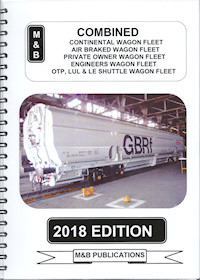
|
| Author: | Mark Gardner and Barry Gardner |
| Publisher: | Mark and Barry Gardner, Leicester |
| Format: | Book |
| Subject: | Wagons |
| Category: | Numbers - Current |
| Spec: | A5, stapled or wire-bound, card or laminated covers |
| Publication date: | 2000-2018 |
| Summary: | Produced by a father and son team, these wagon listing books were among the best in terms of the amount of detail included. |
| Review: | The first of the Gardner books I have seen date from 2000 and have something of a home-made feel to them, rather similar to the LRWS magazine. These covered all wagons apart from private owners, and I seem to recall that the latter was dealt with by Pete Merry under the LRWS brand. The listings were basic but gave the all-important (to me at least) detail of individual TOPS codes, while locations were also shown for some (generally stored) types. I next came across this series in 2010, by which time they had been improved by using wire-binding and laminated covers, and by the inclusion of individual design codes, a feature not seen in any of their competitors. Four slim volumes covered the whole fleet each spring, with a combined (but less detailed) volume produced each summer. By 2018 this had changed so that the spring titles were combined into one, still with the design code details. It appears that this might have been the last title produced, as I understand both of the Gardners sadly died soon afterwards. |
| Reviewed: | 03/02/2010 by Thomas Young (Comments made by others can appear in the notes section towards the bottom of this page) |
| Sample pages: | (Click on any image to view full-sized in a new window)
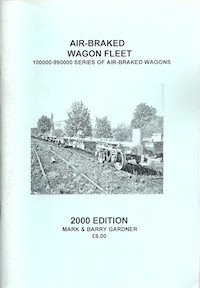
The 2000 air-braked wagon fleet book had 80 pages. The few photos were of low 'photocopier' quality.
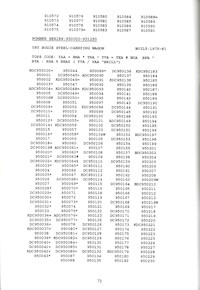
The listing inside was (unsurprisingly) in numerical order, with individual prefixes added and TOPS code variations indicated by symbols.
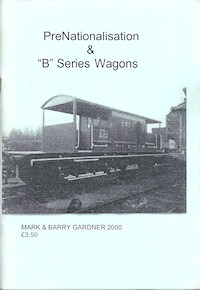
Perhaps surprisingly, the book covering pre-Nationalisation and B-prefixed (not including those in the departmental number ranges) wagons ran to 50 pages.
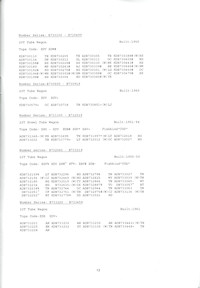
Individual prefixes and TOPS codes were again included. As many of the wagons were by then in store, locations were given for many, using unofficial 2-letter codes.
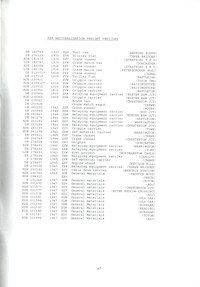
Pre-Nationalisation wagons were put in continuous lists since very few sizeable 'batches' remained. Prefixes, build dates, TOPS codes, descriptions and locations were all provided.
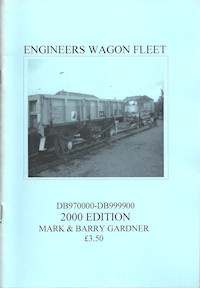
The engineers wagon fleet was covered in a 28 page booklet, very similar to the other two but with an improved 'word-processor' typesetting.
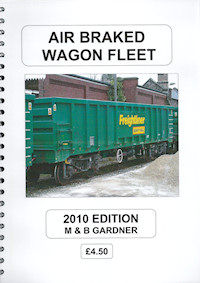
By 2010 the format had changed to wire-bound with laminated covers (on which were four colour photos, the only ones in the books).
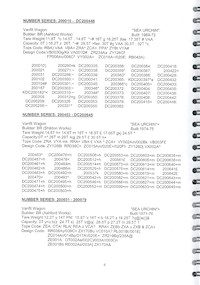
Inside, the detail had been improved by also now showing the design code of individual wagons. However, for some batches the use of symbols for design code, TOPS code and tare weight made the books a bit hard to use.
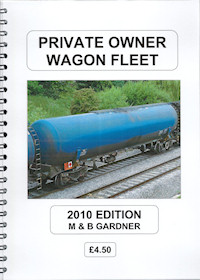
Each of the four titles produced each year was rather slim, and a combined volume (dispensing with the design code and weights detail) was also published each summer.
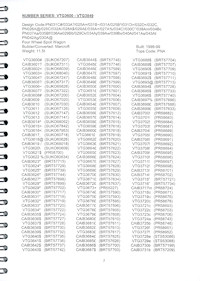
The private owner book included previous identities (where known) and all prefixes were shown. This page again shows the difficulty of covering numerous different design variations.
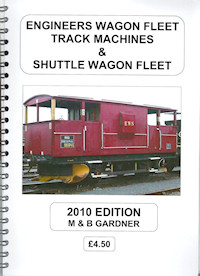
The engineers volume was just 44 pages, despite include B-prefix and pre-nationalisation wagons, on-track plant, departmental coaching stock, internal users, Eurotunnel stock and LUL engineering stock.
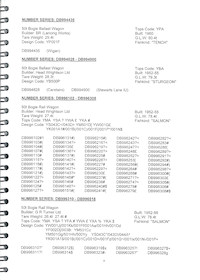
This page shows how locations were given for some rare/stored types, and again shows the symbol overload with the Salmon variations.
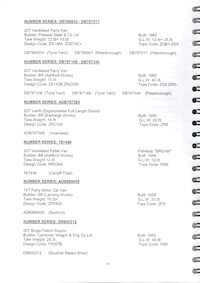
Locations were given for all of the survivors of the B-prefixed series.
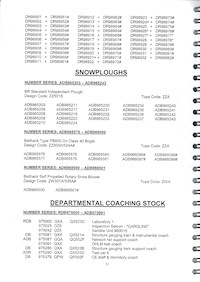
Departmental coaching stock used to warrant its own book but could now be covered in just 3 pages.
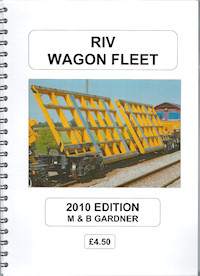
The RIV wagon book was the largest of the four, with 70 pages in 2010.
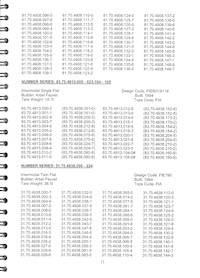
Numbers were given in full (including former identities where known) and with TOPS and design codes shown for individual wagons where needed.
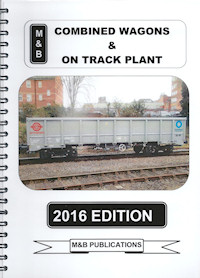
This is an example of the 'lite' summer Combined volume from 2016. Everything was covered in 146 pages.
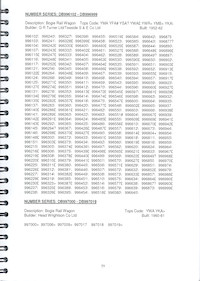
Individual TOPS codes were still shown using symbols (where relevant) but the design code and weight variations were not included.

By 2018 it was decided to combine the four detailed booklets into one volume, this edition running to 186 pages.
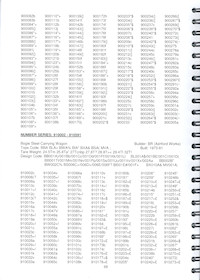
As seen here, the level of detail was retained, with individual TOPS code, design code and weight variations indicated by symbols. Still a bit difficult to follow though, especially in the few cases where the decoding of a given symbol was not provided. |
| Notes: |
No notes have been left yet. ?There may be some notes posted but which have not yet been approved.
|
| Edits: | This item has not been edited.
|

 Register
Register

 The 2000 air-braked wagon fleet book had 80 pages. The few photos were of low 'photocopier' quality.
The 2000 air-braked wagon fleet book had 80 pages. The few photos were of low 'photocopier' quality. The listing inside was (unsurprisingly) in numerical order, with individual prefixes added and TOPS code variations indicated by symbols.
The listing inside was (unsurprisingly) in numerical order, with individual prefixes added and TOPS code variations indicated by symbols. Perhaps surprisingly, the book covering pre-Nationalisation and B-prefixed (not including those in the departmental number ranges) wagons ran to 50 pages.
Perhaps surprisingly, the book covering pre-Nationalisation and B-prefixed (not including those in the departmental number ranges) wagons ran to 50 pages. Individual prefixes and TOPS codes were again included. As many of the wagons were by then in store, locations were given for many, using unofficial 2-letter codes.
Individual prefixes and TOPS codes were again included. As many of the wagons were by then in store, locations were given for many, using unofficial 2-letter codes. Pre-Nationalisation wagons were put in continuous lists since very few sizeable 'batches' remained. Prefixes, build dates, TOPS codes, descriptions and locations were all provided.
Pre-Nationalisation wagons were put in continuous lists since very few sizeable 'batches' remained. Prefixes, build dates, TOPS codes, descriptions and locations were all provided. The engineers wagon fleet was covered in a 28 page booklet, very similar to the other two but with an improved 'word-processor' typesetting.
The engineers wagon fleet was covered in a 28 page booklet, very similar to the other two but with an improved 'word-processor' typesetting. By 2010 the format had changed to wire-bound with laminated covers (on which were four colour photos, the only ones in the books).
By 2010 the format had changed to wire-bound with laminated covers (on which were four colour photos, the only ones in the books). Inside, the detail had been improved by also now showing the design code of individual wagons. However, for some batches the use of symbols for design code, TOPS code and tare weight made the books a bit hard to use.
Inside, the detail had been improved by also now showing the design code of individual wagons. However, for some batches the use of symbols for design code, TOPS code and tare weight made the books a bit hard to use. Each of the four titles produced each year was rather slim, and a combined volume (dispensing with the design code and weights detail) was also published each summer.
Each of the four titles produced each year was rather slim, and a combined volume (dispensing with the design code and weights detail) was also published each summer. The private owner book included previous identities (where known) and all prefixes were shown. This page again shows the difficulty of covering numerous different design variations.
The private owner book included previous identities (where known) and all prefixes were shown. This page again shows the difficulty of covering numerous different design variations. The engineers volume was just 44 pages, despite include B-prefix and pre-nationalisation wagons, on-track plant, departmental coaching stock, internal users, Eurotunnel stock and LUL engineering stock.
The engineers volume was just 44 pages, despite include B-prefix and pre-nationalisation wagons, on-track plant, departmental coaching stock, internal users, Eurotunnel stock and LUL engineering stock. This page shows how locations were given for some rare/stored types, and again shows the symbol overload with the Salmon variations.
This page shows how locations were given for some rare/stored types, and again shows the symbol overload with the Salmon variations. Departmental coaching stock used to warrant its own book but could now be covered in just 3 pages.
Departmental coaching stock used to warrant its own book but could now be covered in just 3 pages. Numbers were given in full (including former identities where known) and with TOPS and design codes shown for individual wagons where needed.
Numbers were given in full (including former identities where known) and with TOPS and design codes shown for individual wagons where needed. This is an example of the 'lite' summer Combined volume from 2016. Everything was covered in 146 pages.
This is an example of the 'lite' summer Combined volume from 2016. Everything was covered in 146 pages. Individual TOPS codes were still shown using symbols (where relevant) but the design code and weight variations were not included.
Individual TOPS codes were still shown using symbols (where relevant) but the design code and weight variations were not included.